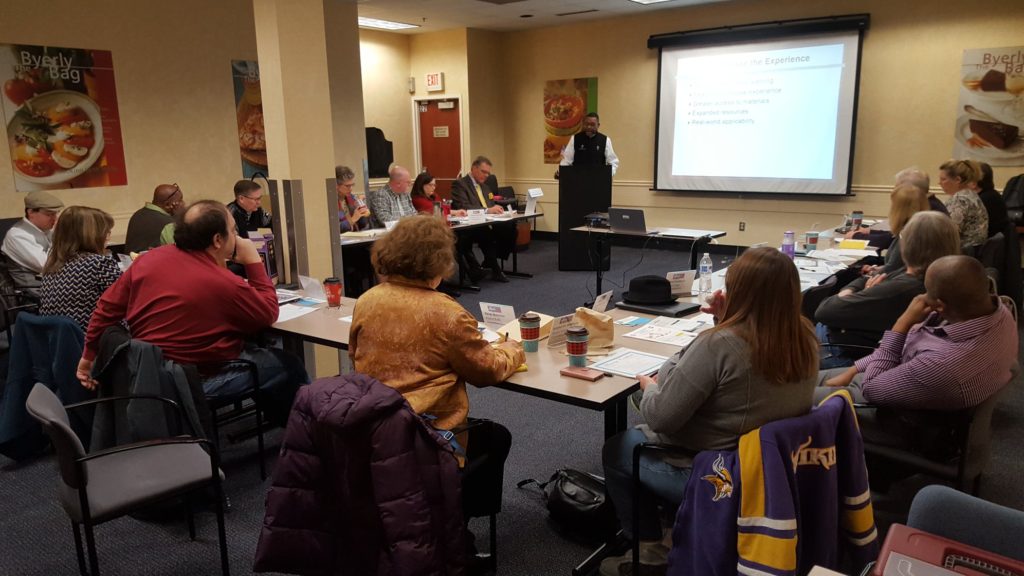As a professional speaker, I value my membership in Toastmasters, a world-wide organization dedicated to empowering individuals to become more effective communicators and leaders. Toastmasters can help you build confidence in front of a low-risk, supportive audience and provides several benefits for you as a professional speaker. Participation in Toastmasters gives you opportunities to:
-
Try out new material in front of low-risk audience
Have you ever thought your material was hilarious, and then nobody laughed? Or, they did laugh and, because you didn’t expect it, you didn’t pause and you “stepped on the laughter?”
Or, maybe those PowerPoint slides were out of order?
Or, you didn’t realize you couldn’t get through that personal story without choking up?
I’ve done all that and more at my Toastmasters club, not at a paid engagement.
2. Try out new activities
On Monday, I did a brainstorming facilitation project at my PowerTalk Toastmasters Club, and wanted to try-out multi-dot voting. After people did individual brainstorming on how the club could increase speaking opportunities for members, I had them share round-robin style one idea each, which a recorder wrote down on a flip chart. After allowing for a short discussion time, I asked everyone (about 17 people) to come up and vote with sticky dots. Each person had 3 sticky dots and could could vote for 3 items, or even put all 3 dots on one item. The end result looked like this: 
I learned 2 valuable lessons:
- Yellow dots are a poor choice, because yellow doesn’t contrast enough with the off-white flipchart paper. Next time, I won’t use yellow dots!
2. Having everyone come up at once, in the same spot, causes a bottleneck, and takes too long. It would have been better, if I had told people, prior to the partner sharing, that when they were ready, they could come up and vote.
I will apply these lessons when I do this activity in a paid engagement!
3. Get feedback
A hallmark of Toastmasters clubs is that every speaker gets a constructive evaluation from another member who serves as a speech evaluator. In many clubs, all members will also provide written feedback. In a few clubs, speeches are even videoed (you can always video yourself, too!). Your speech also will be timed, and you may even get feedback on filler words and disfluencies, such as “um.”
4. Improve your own speaking by evaluating others
Evaluating other speakers makes you consider how you might improve or do things differently, too.
5. Improve at thinking on your feet
Another part of Toastmasters club meetings is an impromptu speaking segment in which a “Topic Master” will call randomly on people to answer a question in 1-2 minutes without preparation. This is great practice for when people ask questions during your presentation.
Bonus reasons: new friends, and an expanded network! I’ve obtained paid speaking engagements through my Toastmasters friends!
Professional Speaker Mark Skipper shares his #MyWhy Toastmasters story (0:44):
What’s involved in joining Toastmasters?
Cost: about $120 for the year
What you get: club membership (most clubs have shorter speaking slots of 5-7 minutes, which is perfect for trying out part of a longer speech), Toastmaster magazine, and educational materials in a self-paced program (your membership includes a learning path through the Toastmasters new education program, Pathways).
Time investment: This can vary. Most club meetings are 1-2 hours (weekly, every other week, or monthly). If you are speaking, you will need to prepare your speech. Every club has people who have duties in facilitating or supporting the meeting, many of which require no prep time, but some do.
How to join a Toastmasters Club:
- Go to Find a Club to search for a club near you (16,600+ clubs in 143 countries)
- Visit at least a couple of clubs to determine a good fit
- Fill out the application that the club gives you and pay your dues!
- Get a mentor in the club to help you get the most out of it.
10 Ways Professional Speaking is Different than Toastmasters

